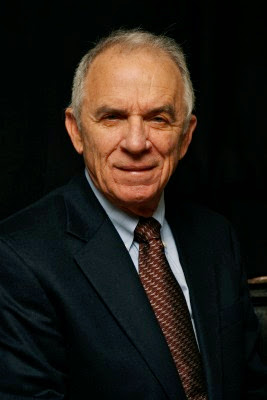November 22, 2011, Los Angeles Times, Reporter recalls Kennedy assassination, interview with Zapruder, by Molly Hennessy-Fiske,
from web site
November 22, 2011, Los Angeles Times, Reporter recalls Kennedy assassination, interview with Zapruder, by Molly Hennessy-Fiske, in Houston,
Darwin Payne, a Dallas native, had left the Fort Worth Press for the Dallas Times Herald a few months before President Kennedy was due to visit.
As a general assignment reporter, Payne had been assigned to stay in the office that day and compile information phoned in from reporters in the field for a story about First Lady Jackie Kennedy.
Then the police radio began blaring news about the president's motorcade.
"He's been hit!" the city editor shouted, and he dispatched Payne to Dealey Plaza.
Payne ran the five blocks in his suit, stenographer's pad in hand.
What had started as a cloudy day by then had turned sunny. It was still crowded. A fire truck had been brought in. Police rushed by, looking up at the book depository. Some were still searching nearby buildings.
"It was total bedlam already — people crying, police surrounding the place, looking for the assassin," he told The Times. "I started interviewing people, looking for witnesses."
People stood talking quietly around the plaza in small groups, asking "Did you see the shot?" as Payne scribbled notes in pencil.
"They were witnessing, wanting to see what happened," Payne said.
By then, the motorcade was gone, off to Parkland Hospital where the president would later be pronounced dead.
A couple of the women Payne interviewed said they worked for a man who had filmed the shooting. He asked them to take him to the man's office.
Abraham Zapruder was a dress manufacturer with offices in the building next to the Texas School Book Depository. A television set in his outer office was blaring the news.
Payne found Zapruder, a balding, middle-aged man, in tears.
"He obviously loved the president," Payne said.
They watched as the news anchor reported the president had been shot and wounded, perhaps severely.
"No, he's dead," Zapruder said told Payne. "I was watching through my viewfinder and his head exploded like a firecracker."
Payne tried to negotiate for Zapruder’s film, getting his publisher on the phone, but to no avail.
"He wanted to give it to FBI," Payne said.
When FBI agents arrived at the office, Payne and longtime Dallas Morning News reporter Harry McCormack attempted to accompany them and Zapruder into another room, but the agents kicked them out, Payne said.
He phoned his story in to the paper from Zapruder's office, and then left for the book depository. The final banner headline read, "President Dead."
Other reporters joined him, and when they heard a police officer had been shot in Oak Cliff, across the Trinity River, they debated whether to stay or to go.
Payne didn't want to leave because he thought the assassin might still be in the building, so he stayed and walked up six flights of stairs.
Those who left saw police capture Lee Harvey Oswald.
After the capture, Payne was dispatched to the rooming house where Oswald had stayed in Oak Cliff. He crossed the river and arrived as darkness fell.
FBI agents had already cleared Oswald’s room, so Payne interviewed neighbors and the woman who ran the boarding house. He wrote a profile of Oswald for the Saturday edition.
The next day, Payne went down to police station, and in a packed hallway he caught glimpses of Oswald as he was led out for questioning. For the first time, he noticed local officials waiting for camera crews to set up before speaking to the press.
"They were waiting for the nation," he said.
Payne, now 74, went on to teach journalism for more than 30 years at Southern Methodist University in Dallas, where he is professor emeritus of communications and served as co-editor of "Just a Shot Away: Reporting the Kennedy Assassination: Journalists Who Were There Recall Their Experiences."
He has seen his penciled notes about the assassination archived and on display next to Dealey PLaza at the Old Red Museum of Dallas County History & Culture.
"I was, in effect, writing for history," Payne said.
Photo: Darwin Payne, 74, professor emeritus of communications at Southern Methodist University, was a young reporter at the Dallas Times Herald when he rushed to Dealey Plaza to cover the assassination of President Kennedy. Credit: Mark Payne.

Would you like to comment?
Join Diigo for a free account, or sign in if you are already a member.